Journey Through Time: Unearthing the Ancient Secrets of Mull, Iona, and Ulva (BC Era)
The Inner Hebrides, with their rugged coastlines and dramatic landscapes, hold a profound secret: a history stretching back thousands of years, long before written records. The Isles of Mull, Iona, and Ulva are particularly rich in archaeological treasures from the BC era, offering a tangible link to the lives of our ancient ancestors. From mysterious standing stones to formidable Iron Age forts, these islands invite us to step back in time and explore the enduring legacies of their earliest inhabitants.
Let’s embark on a journey to discover some of the most significant BC-era archaeological sites across these captivating Scottish islands.
Isle of Mull: A Prehistoric Powerhouse
Mull, the largest of the three islands, is a veritable open-air museum of prehistoric activity, particularly renowned for its megalithic monuments and Iron Age defenses.
Lochbuie Stone Circle
Nestled at the foot of Ben Buie, the Lochbuie Stone Circle is a classic Bronze Age monument, dating back to approximately the 3rd millennium BC. This impressive circle originally featured nine granite stones, accompanied by three additional outlying monoliths. While their exact purpose remains a mystery, such stone circles are widely believed to have served as sites for ancient rituals, ceremonies, or even astronomical observations, connecting early communities to the celestial cycles. Location: Lochbuie, Isle of Mull.
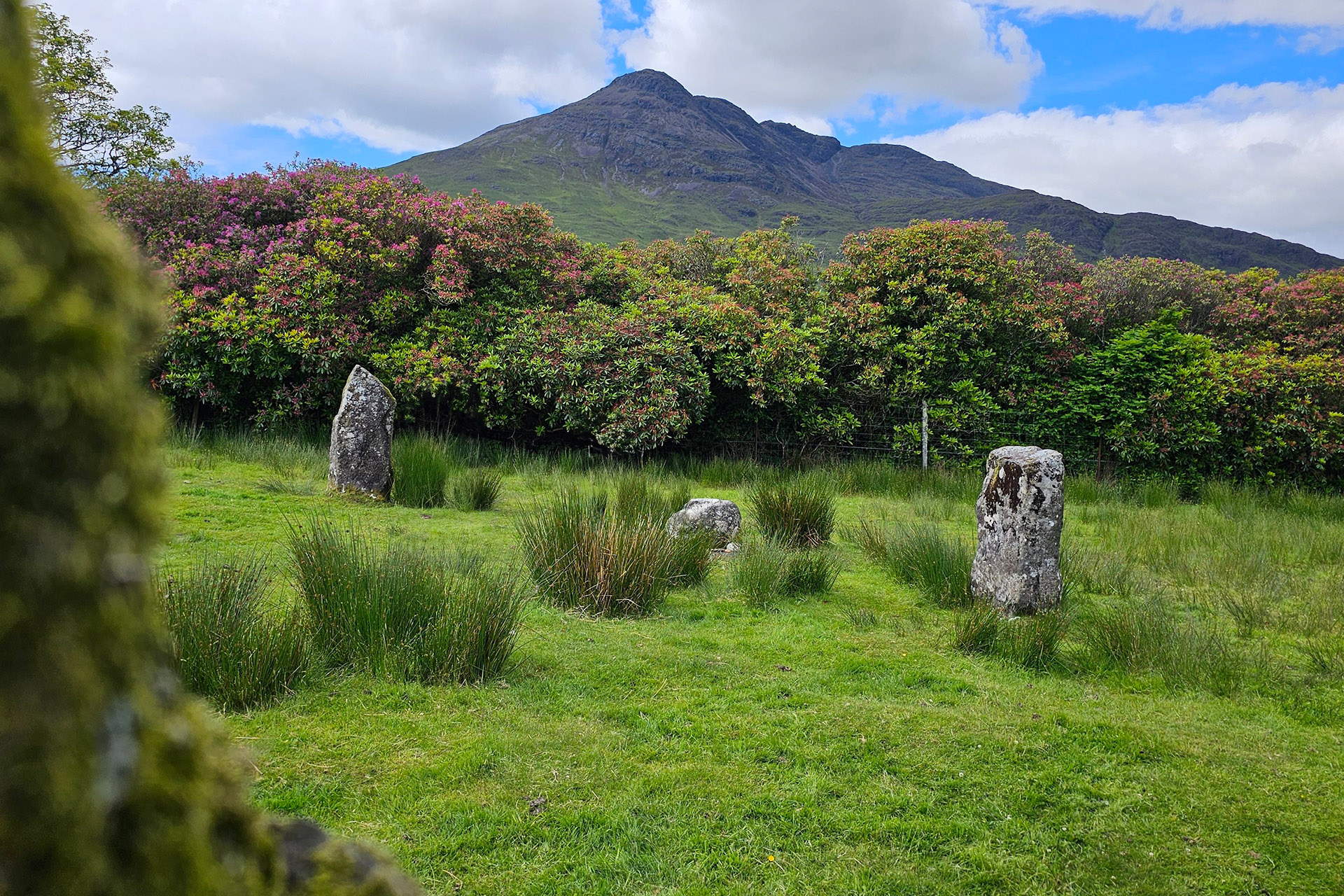
Lochbuie Standing Stones
Kilmore Standing Stones
Near the village of Dervaig, you’ll find the Kilmore Standing Stones, a prehistoric site from the Neolithic or Bronze Age, spanning roughly 4,000 to 800 BCE. Of the original five stones, only two still stand proudly at about 2.5 meters tall, offering a glimpse into the monumental efforts of early islanders. These stones, like many others of their kind, likely played a role in the spiritual or communal life of the people who erected them. Location: Near Dervaig, Isle of Mull.
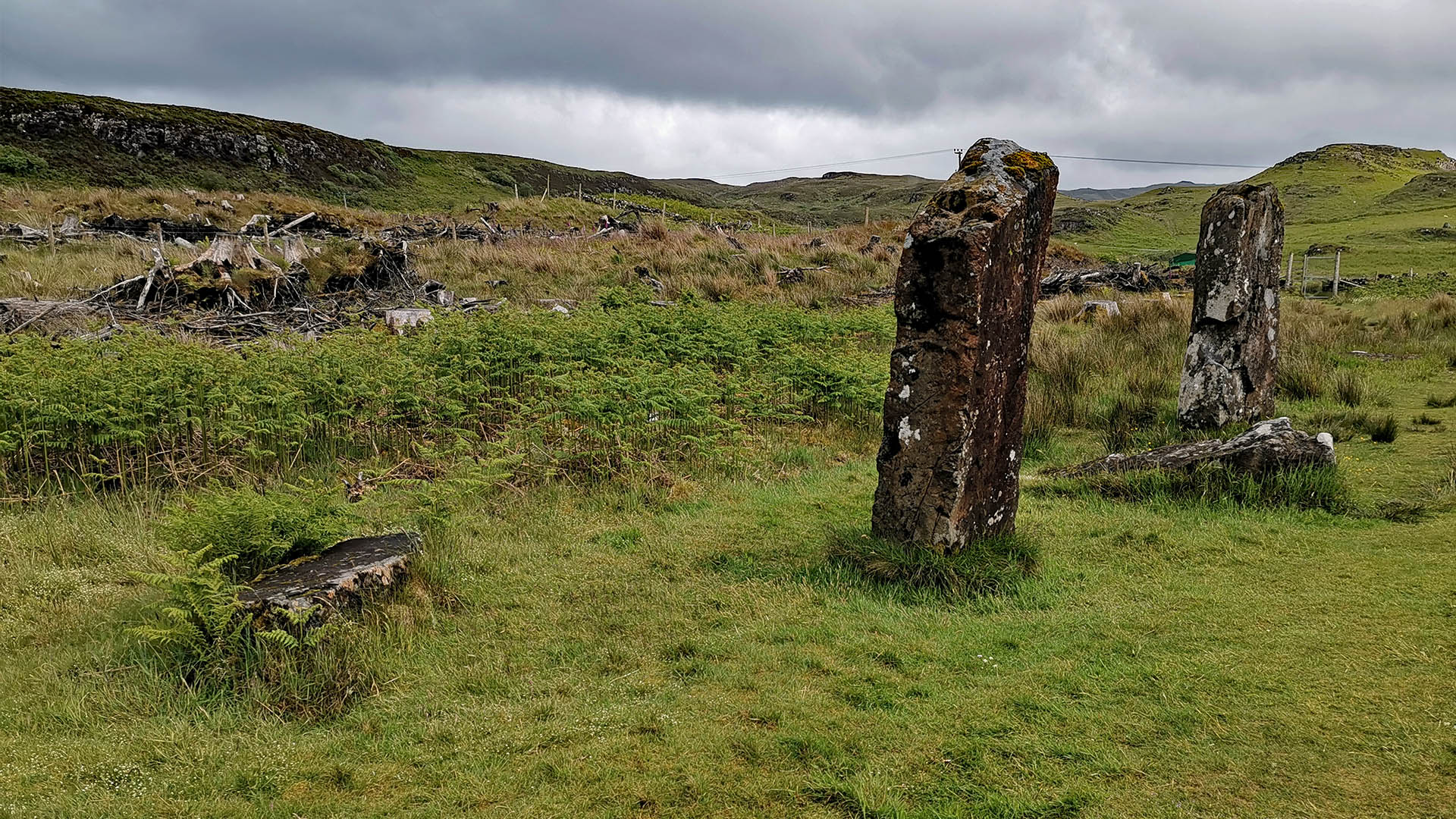
PaulT (Gunther Tschuch), CC BY-SA 4.0, via Wikimedia Commons
Glengorm Standing Stones
Located to the west of Glengorm Castle, the Glengorm Standing Stones also hail from the Neolithic or Bronze Age (4,000 to 800 BCE). Historical records indicate that only one of these three tall stones was upright in 1800, with the others re-erected by 1942. These sites are not just ancient markers; they are often intertwined with later histories, in this case, even associated with the poignant era of the Highland Clearances. Location: West of Glengorm Castle, Isle of Mull.
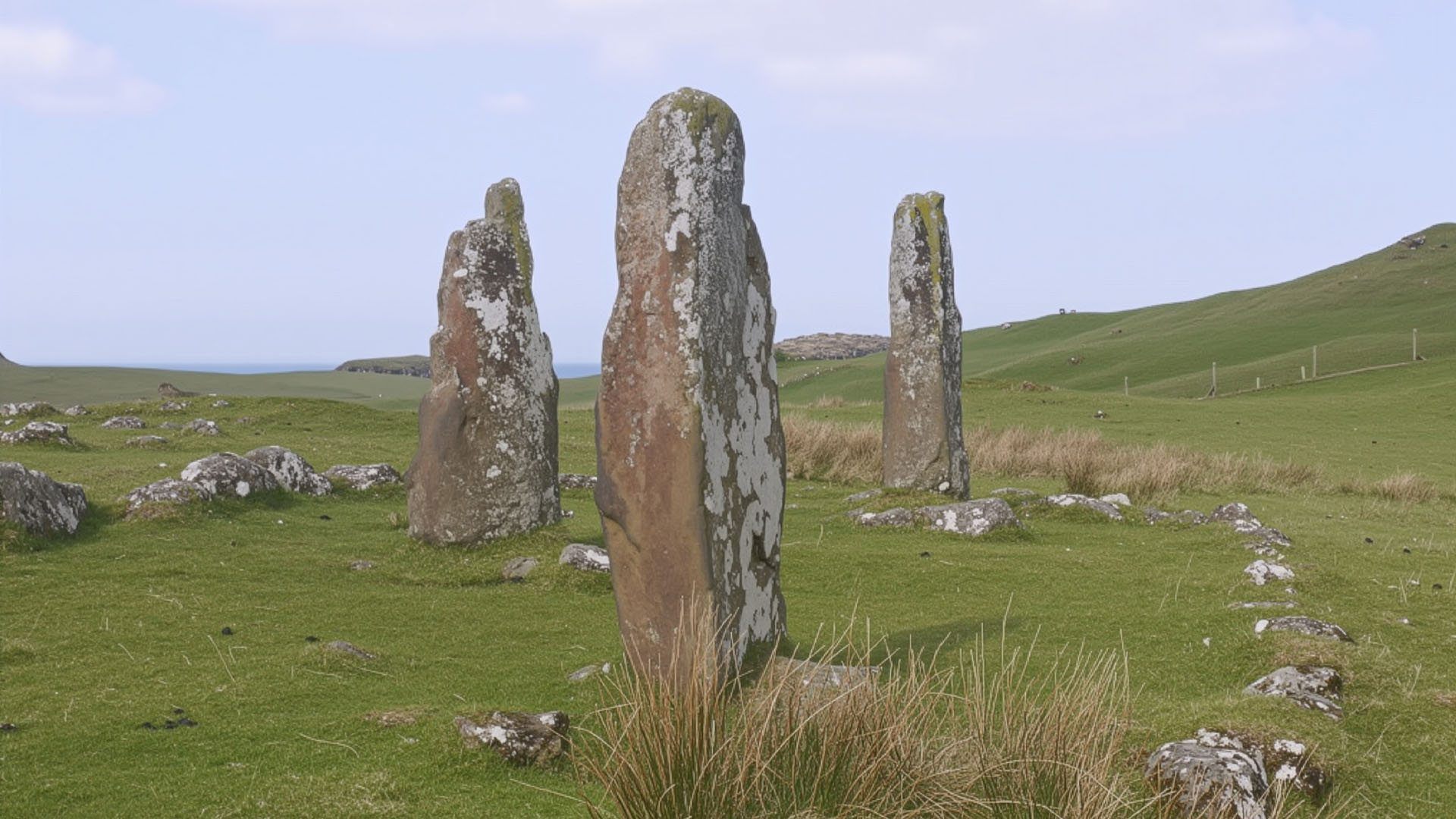
Standing stones, Glengorm Castle by Richard Webb, CC BY-SA 2.0, via Wikimedia Commons
Maol Mor Standing Stones
Mull is particularly distinctive for its “short stone rows,” a unique type of Bronze Age monument, typically consisting of three to five stones in a line. The Maol Mor Standing Stones are a prime example, dating back around 3,000 years ago (between 3500 and 1500 BC). Research suggests these rows were carefully aligned to track the moon’s path throughout the year, often incorporating natural landmarks like Ben More. This indicates a sophisticated understanding of celestial movements and a rich spiritual life, with some archaeologists even suggesting these sites acted as “portals to the underworld” due to the presence of quartz and evidence of fire rituals. Location: Near Dervaig, Isle of Mull.
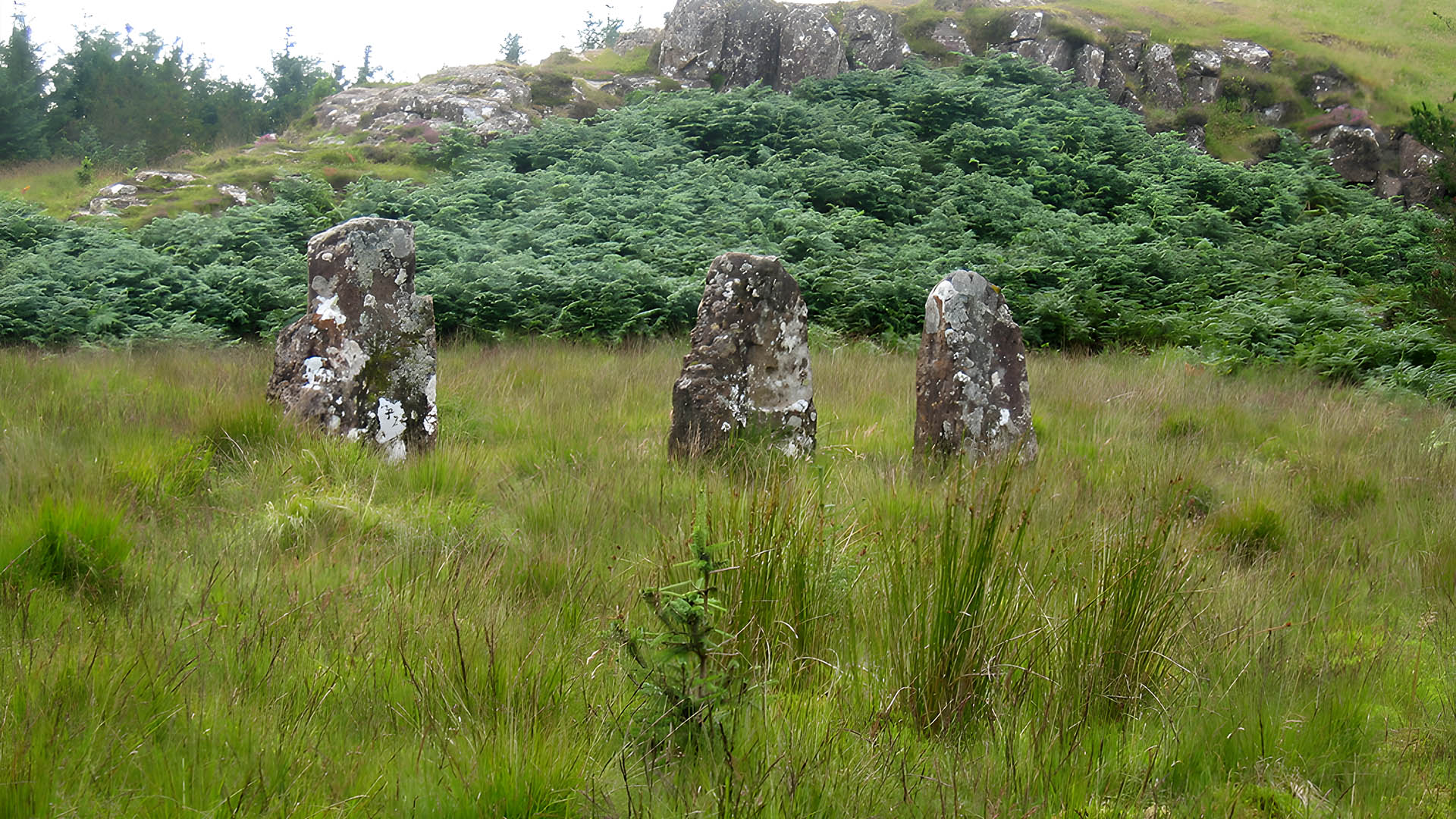
Standing Stones, Maol Mor by Andrew Curtis, CC BY-SA 2.0, via Wikimedia Commons
Quinish Standing Stones (Ach’nan Carragh)
Another significant short stone row is found at Quinish, also known as Ach’nan Carragh. Dating to the Bronze Age (around 3,000 years ago or the second millennium BC), this site originally comprised five stones, though only one, often called ‘Caliach’ (old lady in Gaelic), remains upright. Like Maol Mor, these stones were likely used for lunar tracking and rituals involving fire and burial, reflecting a deep connection between the islanders, their landscape, and their cosmological beliefs. Location: Quinish, near Dervaig, Isle of Mull.
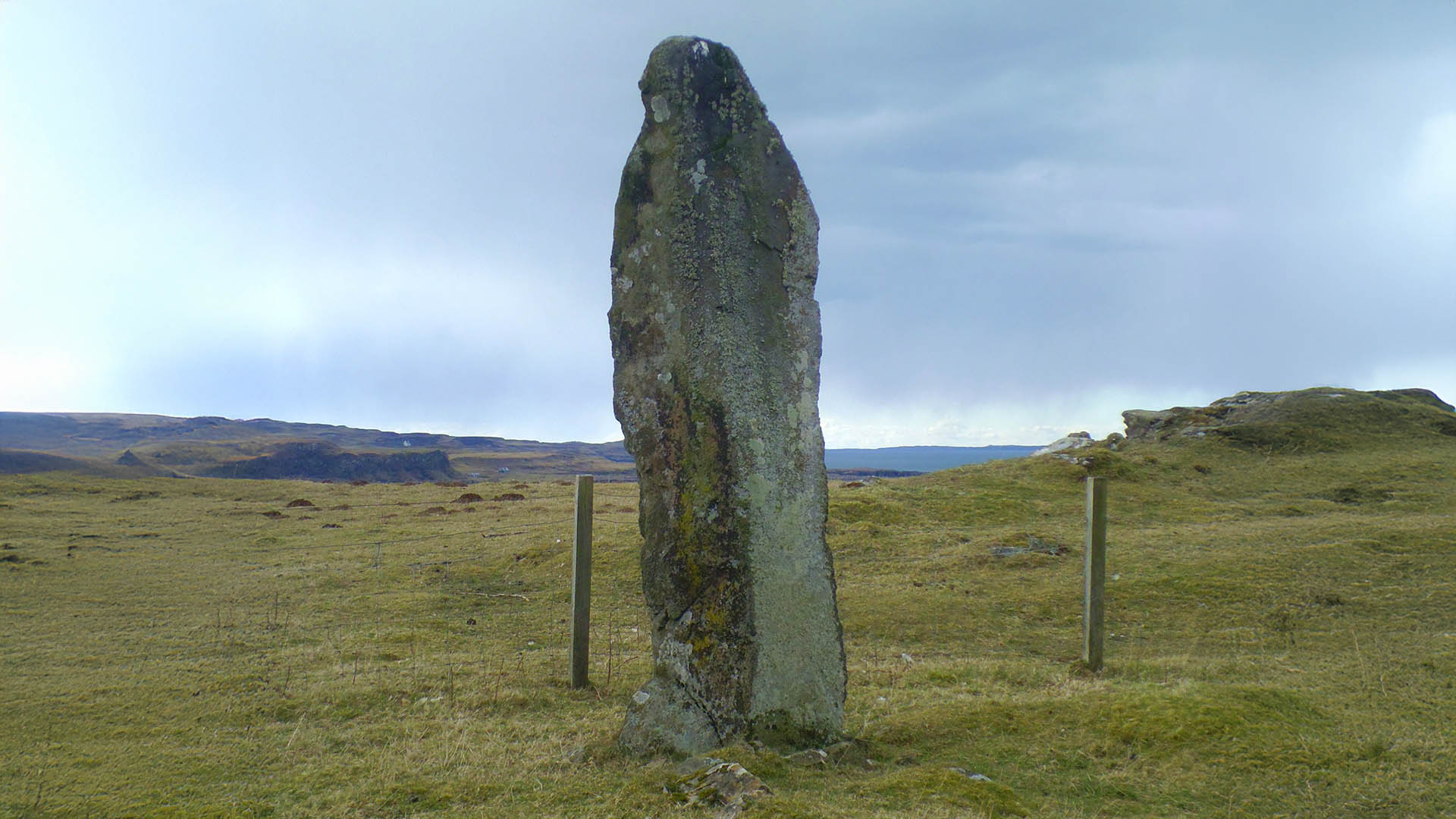
Standing stone, Quinish by Gordon Hatton, CC BY-SA 2.0, via Wikimedia Commons
Baliscate Stone Row
Near Tobermory, the Baliscate Stone Row is another Bronze Age short stone row, dating back approximately 3,000 years. Excavations here have revealed not only the original positions of its three or four stones but also a small cremation burial. The discovery of quartz chippings at Baliscate and other similar sites points to rituals involving light and fire, suggesting these monuments were more than just markers—they were active ceremonial spaces. Location: Near Tobermory, Isle of Mull.
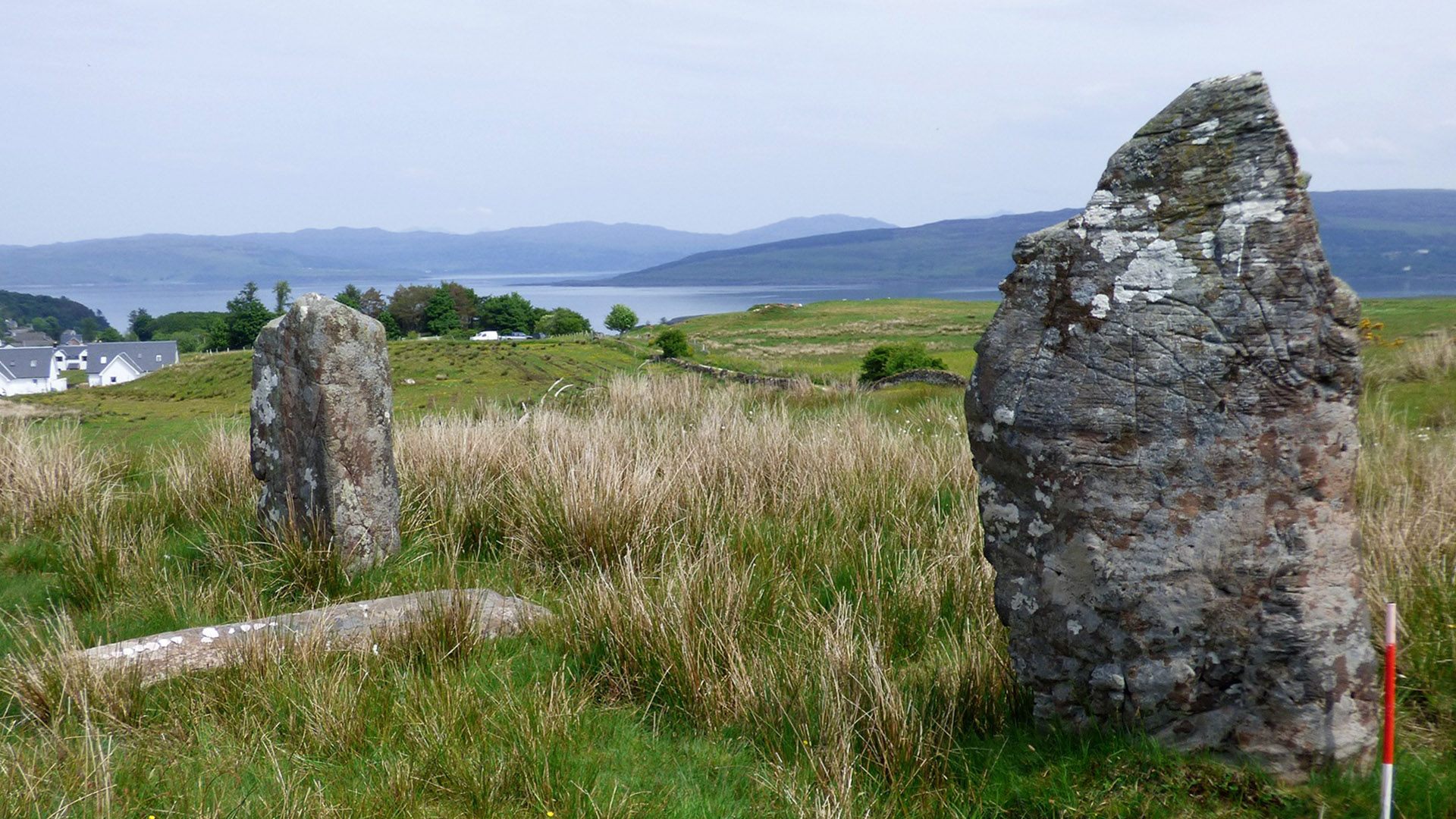
Baliscate stone row by Sandy Gerrard, CC BY-SA 2.0, via Wikimedia Commons
Ardnacross Stone Rows (North & South)
The Ardnacross area boasts two distinct Bronze Age stone rows, each composed of three large slabs, dating to around 3,000 years ago. Archaeological investigations have shown that these stones were erected in an area that had been ploughed and burnt, and some were even deliberately toppled into prepared pits, suggesting a ritualistic “closure” of the monument. The discovery of a cup-marked stone and a bronze bracelet further highlights the complex ritual activities that took place here. Location: Ardnacross, Isle of Mull.
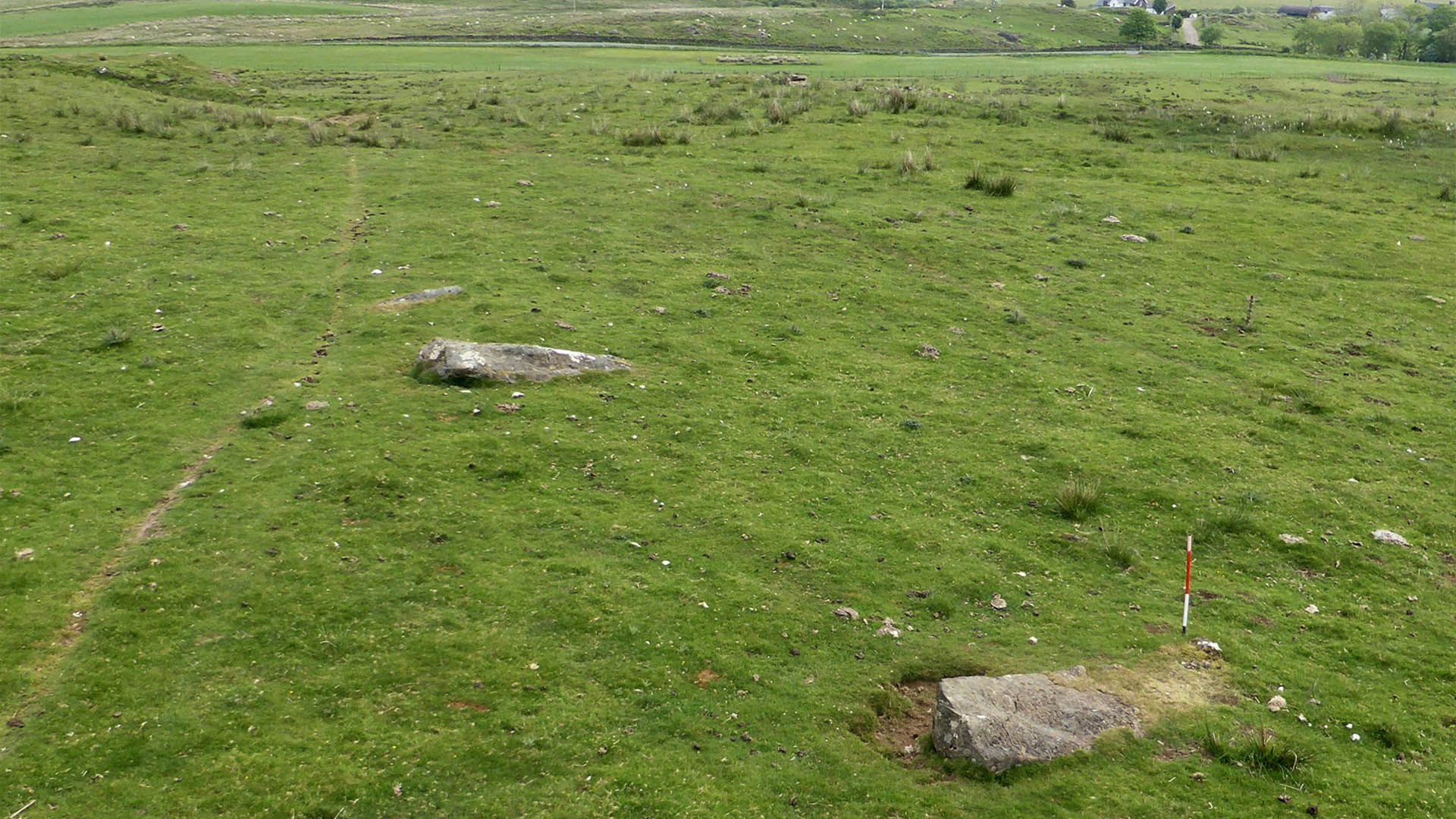
Ardnacross, North stone row by Sandy Gerrard, CC BY-SA 2.0, via Wikimedia Commons
Dun Nan Gall
Moving into the Iron Age, Mull features impressive defensive structures known as brochs. Dun Nan Gall, located on the west coast at Loch Tuath, is a well-preserved example of these drystone towers, dating between 600 BC and AD 400. This circular stone building, with walls up to 3 meters thick and internal features, served as a resilient defensive structure and likely an elite settlement or community hub. Location: Loch Tuath, West Coast of Mull.
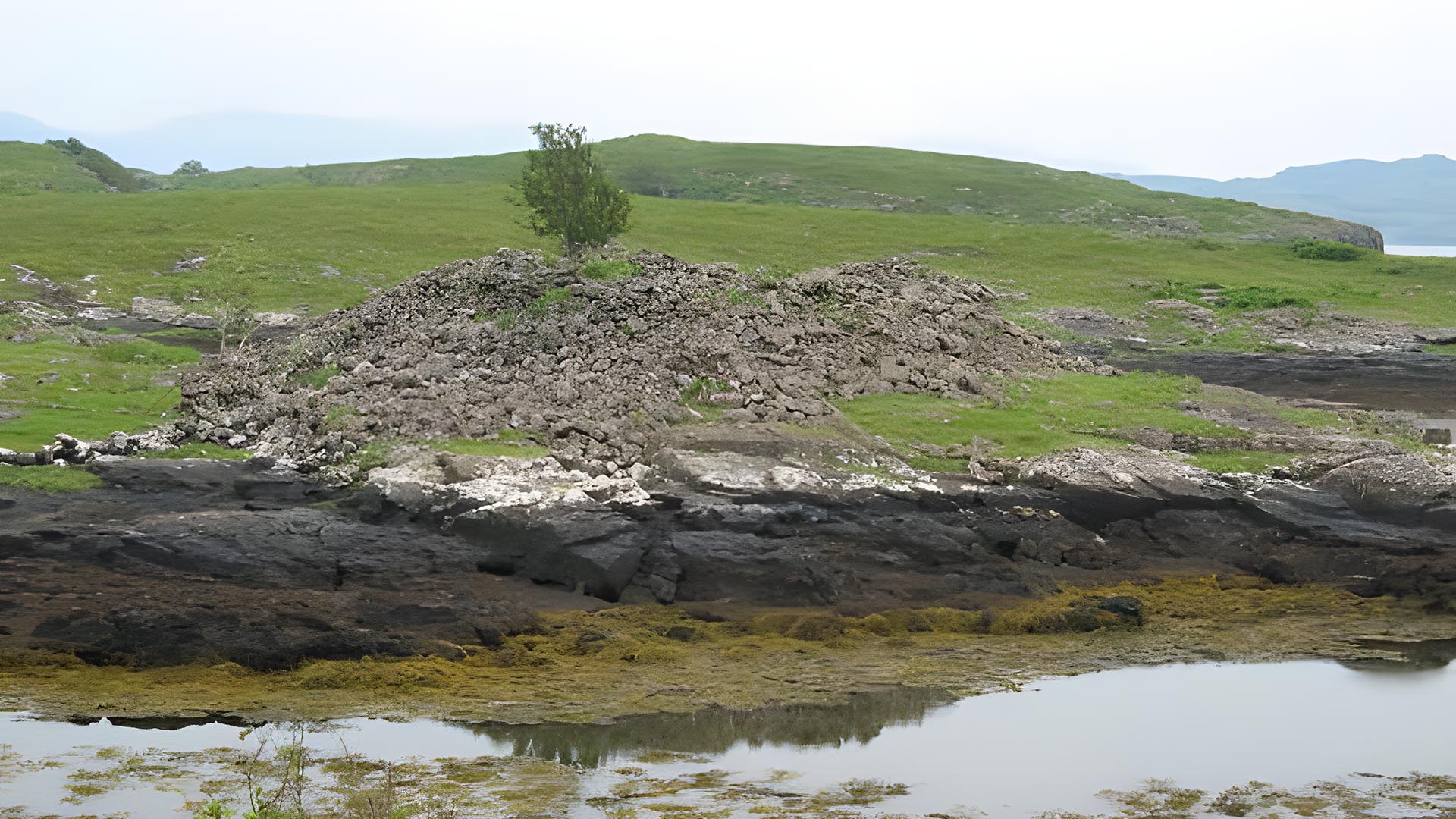
John Allan / Dun nan Gall
An Sean Chaisteal
Overlooking the Sound of Mull, An Sean Chaisteal is another Iron Age broch. Though now a circular mound of tumbled stones, its original circular plan with a 4-meter-thick wall and a 10.7-meter central court is still discernible. Traces of intramural structures and a defensive outwork suggest its complex design, reinforcing its role as a fortified site during a period of potential instability. Location: Overlooking the Sound of Mull.
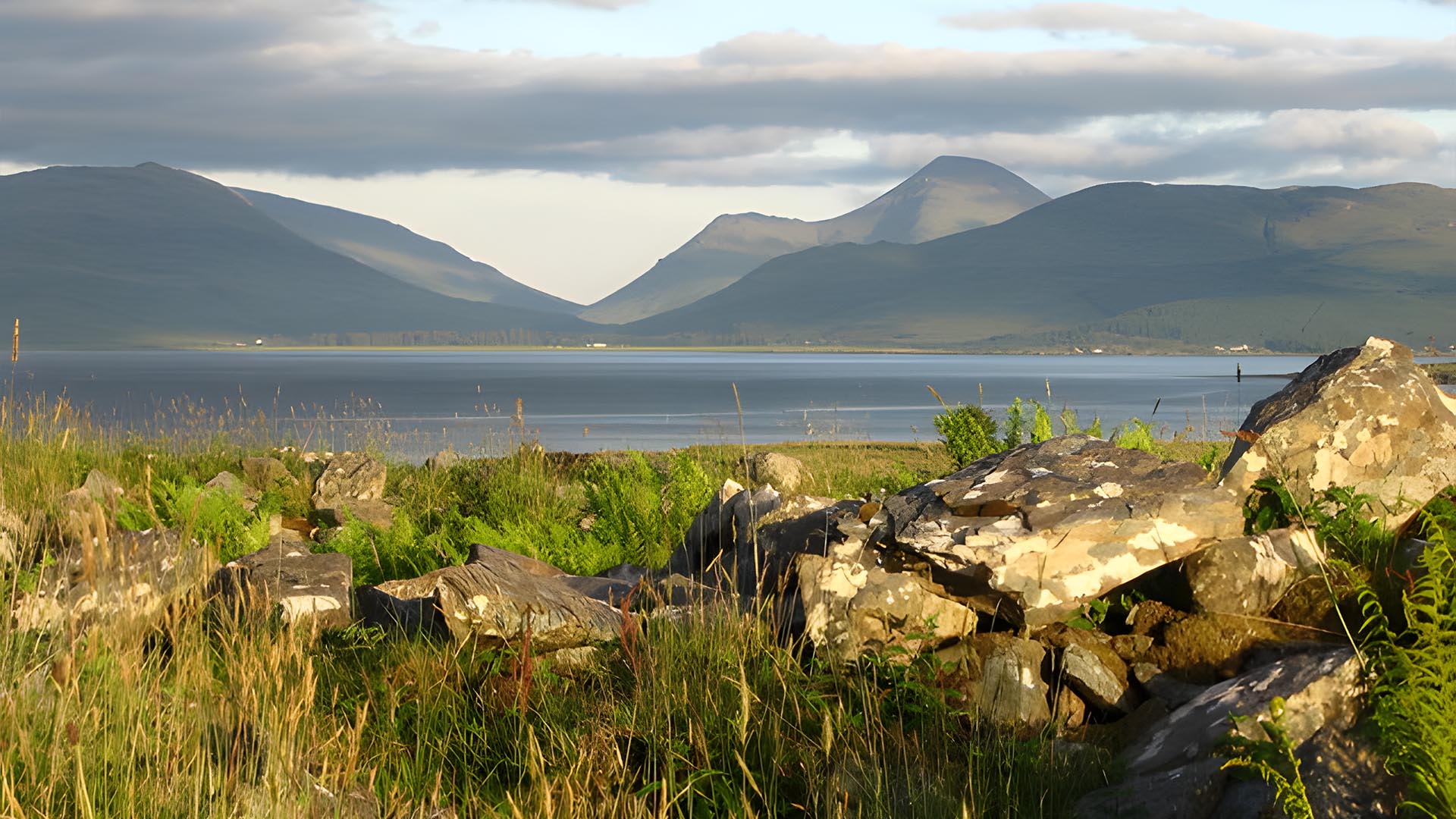
Ken Craig / An Sean Chaisteal (ruined broch)
Loch Sguabain Crannog (Caisteal Eoghainn a’ Chinn Bhig)
Crannogs, artificial or modified natural islands, were common in Scotland and Ireland, serving as dwellings and defensive structures. The Loch Sguabain Crannog, also known as Caisteal Eoghainn a’ Chinn Bhig, dates from the Late Bronze Age/Early Iron Age, with peak construction between 800 BC and AD 200. This significant example features a substantial 3.3-meter-thick dry-stone wall, highlighting the ingenuity of its builders in creating secure island strongholds. Location: Loch Sguabain, Glen More, Isle of Mull.

Crannog, Loch Sguabain by Richard Webb, CC BY-SA 2.0, via Wikimedia Commons
Isle of Iona: An Ancient Stronghold
While Iona is most famous for its early Christian heritage, its history stretches back to the Iron Age, with evidence of earlier fortifications.
Dun Cul Bhuirg
Located on the Isle of Iona, Dun Cul Bhuirg is an Iron Age hillfort, representing one of the island’s most ancient ruins. This small fort was defended by a stone wall, with internal traces of a circular house. Archaeological excavations in the 1970s uncovered Late Iron Age glass beads, and visible vitrified stone defenses further confirm its identity as an Iron Age structure. The pottery found at the site is typical of decorated Iron Age wares from the Hebrides, likely dating between 100 BC and AD 300. Folklore connects this old fort to various traditions, including a place where St. Columba once saw a rain-cloud that he predicted would bring a plague to Ireland, and it was also traditionally considered an important meeting place for druids. Today, it remains a visitable site, offering a tangible link to Iona’s pre-Christian past. Location: Isle of Iona.
Isle of Ulva: Tracing the Earliest Footprints
Ulva, though smaller, offers some of the most compelling evidence of early human occupation in the Inner Hebrides, dating back to the Mesolithic period.
Livingstone’s Cave (Ulva Cave)
Livingstone’s Cave is a site of national and international significance, providing compelling evidence of human use dating back over 8,000 years, with a shell midden deposit from approximately 5650 BC. Excavations have uncovered a wealth of Mesolithic and Neolithic material, including marine molluscs, animal bones, flint and bone tools, and even human infant remains. This cave represents the clearest example in Britain of a midden deposit spanning both Mesolithic and Neolithic activity, offering unparalleled insights into early human diet, environmental adaptation, and the transition to agriculture. Location: Isle of Ulva.
Ulva Standing Stones
Ulva also contains various Neolithic remains, including standing stones dated to 1500 BC. Specific examples can be found west of Cragaig and northeast of Ormaig. The presence of dolmens further attests to prehistoric human activity and settlement on the island, showcasing the widespread megalithic tradition across the Inner Hebrides. Location: Isle of Ulva.
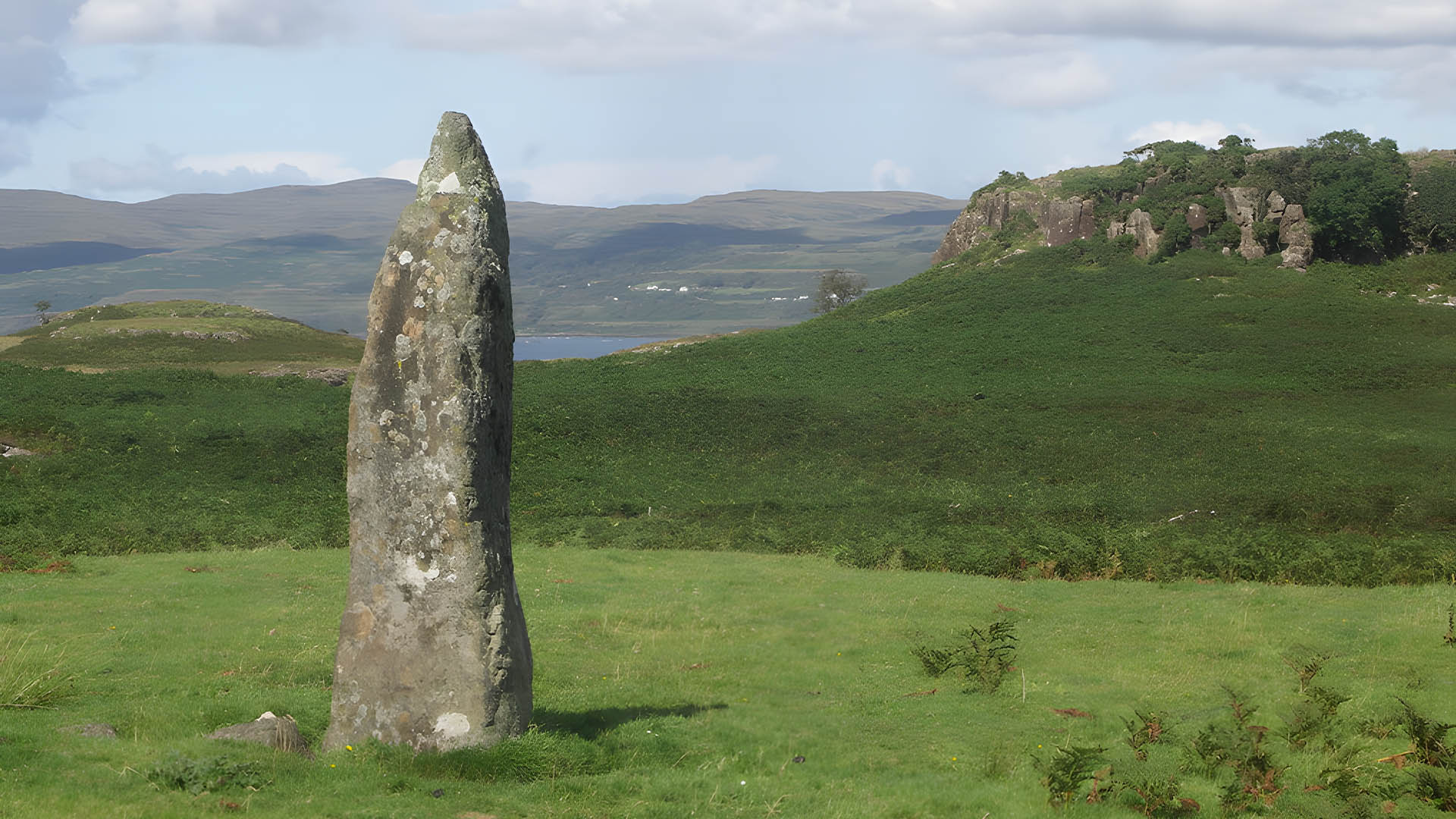
Standing stone, Ulva by Graham Hogg, CC BY-SA 2.0, via Wikimedia Commons
Dùn Bhioramuill
From the Iron Age, Ulva features dùns (forts), such as Dùn Bhioramuill, located on the southeast slope of A’ Chrannag. These structures served defensive or communal purposes, indicating the strategic importance of fortified positions during this period. Location: Southeast slope of A’ Chrannag, Isle of Ulva.
A Timeless Legacy
The archaeological sites of Mull, Iona, and Ulva from the BC era offer a captivating window into the distant past. From the ritualistic landscapes of the Bronze Age to the formidable defenses of the Iron Age, and the earliest traces of human life in Mesolithic caves, these islands tell a story of continuous human presence, adaptation, and ingenuity. Exploring these ancient sites allows us to connect with the people who shaped these lands millennia ago, reminding us of the enduring human spirit etched into the very fabric of the Inner Hebrides.

